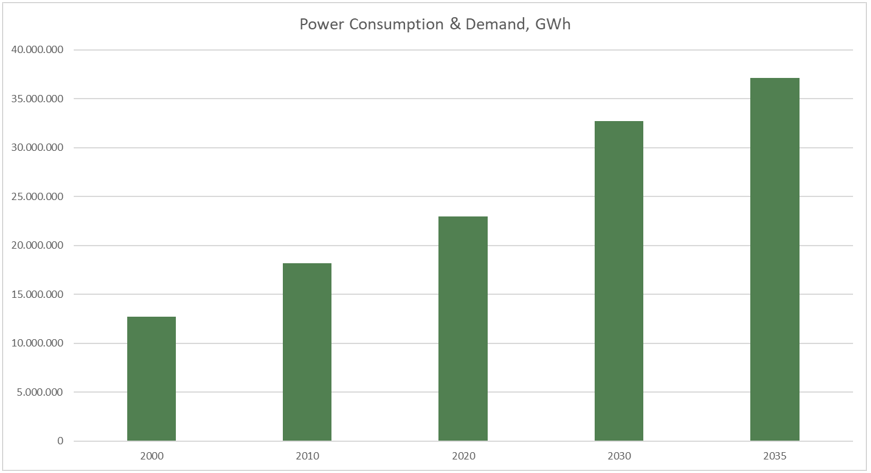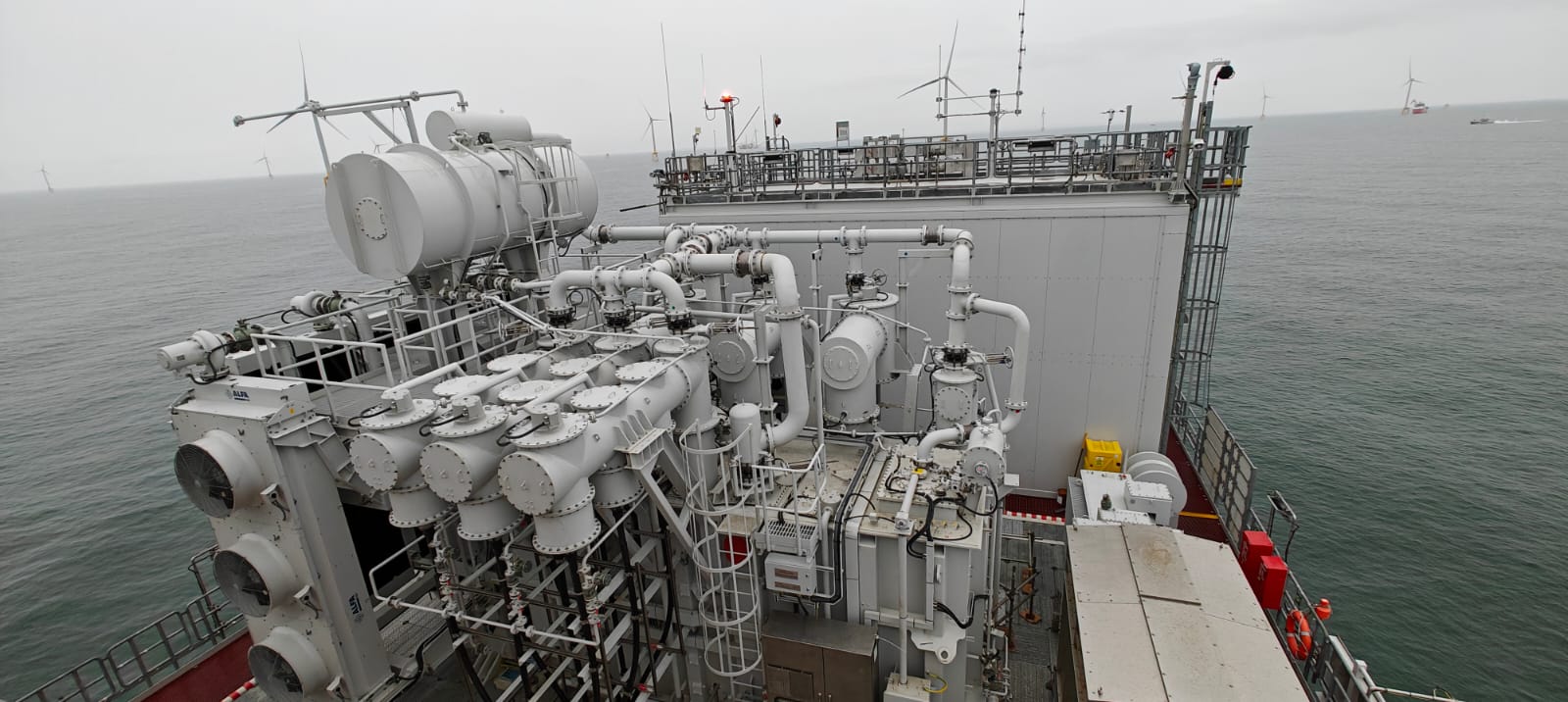ABSTRACT: The increasing demand for electricity, driven by technological advancements and the shift towards electric transportation, has put significant strain on power grids worldwide. This strain, coupled with the push towards renewable energy sources, highlights the urgent need for grid modernization and expansion. Failure to upgrade grids can lead to overloads, causing disruptions and blackouts. This congestion can have serious consequences, especially during peak demand periods or when there is a mismatch between generation and consumption. Mitigating these risks requires the adoption of reliable solutions to prevent transformers explosion and fire, investing in grid infrastructure upgrades, efficient grid management practices, and integrating renewable energy sources effectively.
Human activities have increased the demand for electricity over the last few decades. The Internet first; and all that comes with it: Cell phones, tablets, intelligent appliances. Then the workplace was transformed into a more consuming environment in terms of electricity demand: more computers, private networks, servers, Wi-Fi services, cloud storage and much more. The last few years with the growth of remote working, households’ energy and highspeed internet consumption have erupted.
Nowadays the cars, bus and other forms of transportation are shifting from traditional fossil fuels to electric propulsion. And, as result of all these realities, the electricity demand and consumption has grown exponentially. On the following chart we can appreciate the trend over the decades, where electricity consumption has more than tripled from 2000 to the expected consumption for 2030.

According to this GlobalData report this is the evolution of the Power Consumption & Demand in GWh, for the 2000, 2010, 2020 and the forecast for 2030 and 2035. As we can spot, the global consumption and demand for electricity has more than doubled, and it is expected to exponentially grow over the next decades.
On the other hand, we have major institutions, governments and multilateral agencies pledging for the adoption and evolution towards carbon free sources of energy generation with a due date of just a few decades to make it happen.
The new green projects, on the generation side, have found a bottleneck towards decarbonization: all of these must be connected to the transmission grid, and this transmission grid has been designed and evolved over time disregarding this new paradigm. And this grid, is also used to be nurtured by fossil, but stable energy sources in comparison to “clean” energy sources that can be affected by weather conditions.
These two realities combined have brought as result the fact that energy grids must be updated and upgraded to meet the evolving demand and the challenges that we face today. Otherwise, it’s just a matter or time and luck, where and when our grid could face overloading issues.
But what is exactly an overloaded grid? An overloaded grid occurs when the demand for electricity surpasses the capacity of the grid to deliver it. This often happens due to the energy transition, where electricity needs to be transported over long distances. However, the progress on expanding the grid is slow, leading to congestion or bottlenecks in the grid.
Grid congestion can have serious consequences. Like pouring a large amount of water into a funnel, where only a limited amount can flow out, an overloaded grid can limit the amount of electricity that can be transmitted, causing disruptions and even blackouts. This is especially problematic during peak demand periods or when there is a mismatch between electricity generation and consumption, such as when wind-powered installations in one region generate excess electricity needed in another region.
To address grid congestion, Transmission System Operators (TSOs) use tools like redispatch, where power plants are shut down or powered up to balance the grid, and feed-in management, where renewables are temporarily disconnected from the grid. These are temporary solutions, and the long-term solution lies in expanding and upgrading the grid infrastructure.
One of the most important consequences that an overloaded grid might has, is that it can lead to a transformer overheating due to the rise of temperature. A transformer can become overloaded when the amount of power it is required to handle exceeds its specified capacity, as indicated on its nameplate. When a transformer is overloaded, its internal temperature rises, which can significantly reduce its lifespan and can lead to a Transformer Explosion due to tank rupture.
Power transformers are critical and costly components in power networks, facilitating the efficient transmission and distribution of electricity across different voltage levels. An overloaded transformer, on the way we described, can lead to system failures, even transformer’s explosion, impacting the reliability of the entire network and causing substantial economic losses. To ensure the optimal operation of transformers, careful planning and control are necessary.

The consequences of a transformer explosion for the energy transmission grids and companies can be very severe, we can take for example a transformer explosion suffered by PLN Greater Jakarta Distribution Main Unit (Disjaya), on February 2020. Among its consequences “General Manager of PLN Greater Jakarta Distribution Main Unit (Disjaya) M Ikhsan Assad said there was a disturbance at the PLN Cawang substation for Cawang-Depok transmission in the Cililitan area, East Jakarta. Due to this disruption, electricity distribution in a number of areas was disrupted.”1, it also states “There was no fire, it was just a normal PMT (disconnection), which is called a high voltage suddenly tripping…”2.
In conclusion, the strain on our power grids from increased electricity demand and the shift towards renewable energy sources underscores the urgent need for grid modernization and expansion. Failure to upgrade our grids can lead to overloaded grids, causing disruptions and blackouts. One critical consequence of overloaded grids is the potential overheating of power transformers, which can lead to catastrophic failures. Transformers are crucial for efficient electricity transmission, and their failure can result in widespread outages and economic losses.
To mitigate these risks, investing in grid infrastructure upgrades, implementing efficient grid management practices, and integrating renewable energy sources effectively are essential. Additionally, the Transformer Protector (TP) offers a proven solution to protect transformers from explosions and fires caused by overheating or transmission overload. The TP quickly depressurizes tanks, separates gases from oil, channels flammable gases away from the transformer, and injects inert gas to make the transformer safe for repair after a fault. By taking these steps, we can ensure a reliable and sustainable electricity supply for the future.
- Detik News, Zulfi Suhendra, Zunita Amalia – detikNews, THERE WAS AN EXPLOSION AT THE CAWANG SUBSTATION, THIS IS THE AREA WHERE THE ELECTRICITY WENT OUT, https://news.detik.com/berita/d-4894449/ada-ledakan-di-gardu-induk-cawang-ini-daerah-yang-mati-listrik
- Detik News, Zulfi Suhendra, Zunita Amalia – detikNews, THERE WAS AN EXPLOSION AT THE CAWANG SUBSTATION, THIS IS THE AREA WHERE THE ELECTRICITY WENT OUT, https://news.detik.com/berita/d-4894449/ada-ledakan-di-gardu-induk-cawang-ini-daerah-yang-mati-listrik




